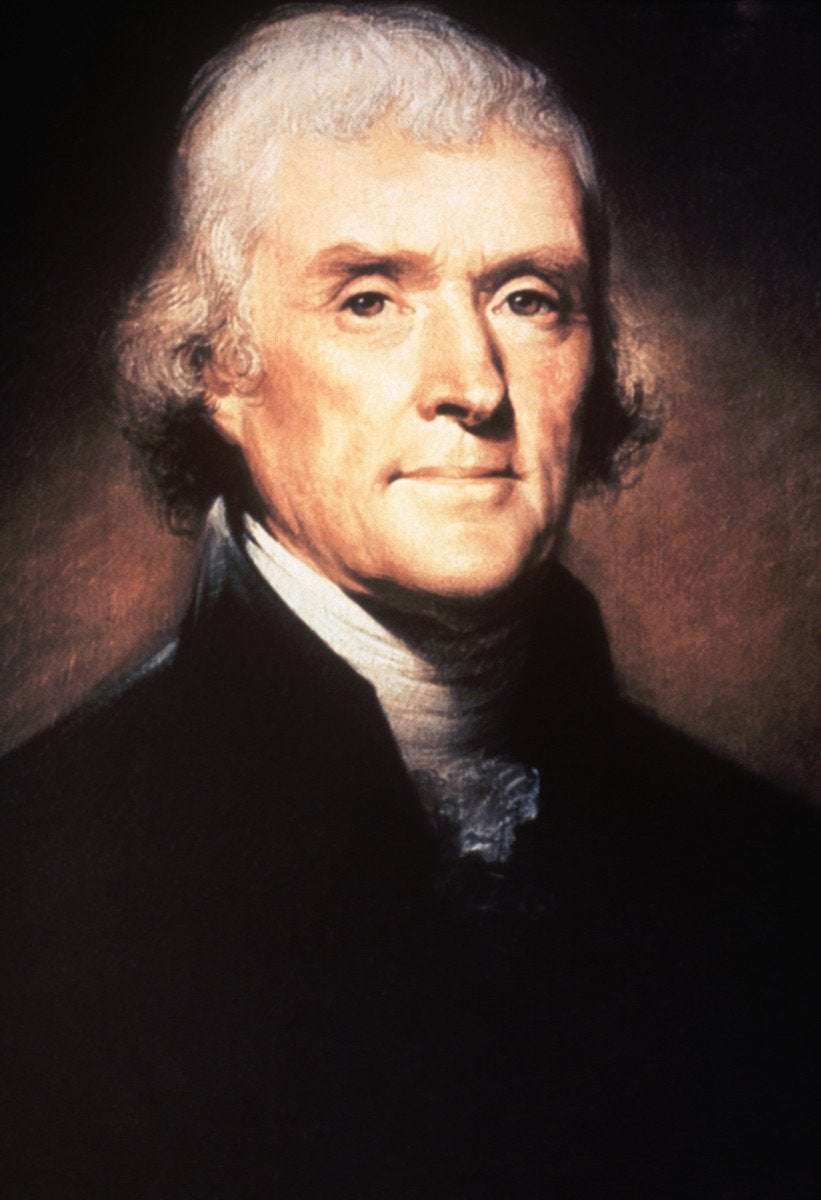Founding Father, author of the Declaration of Independence, third president of the United States, appropriator of the Louisiana Purchase, gastronome…? Of the numerous extraordinary contributions Thomas Jefferson made to the United States of America, one that is often overlooked is his legacy of gourmet cuisine and sustainable horticulture.
In the mid-18th century, the American diet was still largely influenced by English traditions. Meats were often boiled, baked or stewed, while less-frequently-consumed vegetables were typically boiled. Baked breads, sweet pies and alcohol—usually hard cider, ale and fortified port or Madeira wines—were readily consumed. In 1784, two years after his wife had died, Thomas Jefferson was appointed minister plenipotentiary by Congress and set off for France. It was during this time in Paris, and while traveling throughout southern France and northern Italy, that he developed an enduring appreciation of fine cuisine.
ADVERTISEMENT Thanks for watching! Visit Website
Jefferson arranged for one of his slaves, James Hemings, to accompany him to Europe so that he could be trained in the art of French cooking. Under the tutelage of a few well-known chefs and caterers, Hemings soon acquired the skills necessary to assume the role of chef de cuisine at Jefferson’s private residence on the Champs-Elysees, where Jefferson maintained a garden that included Indian corn from American seeds, along with other fruits and vegetables. The scientific gardener enjoyed exchanging plants with his French companions and experimenting with the most unusual vegetables he could obtain.
While touring the country and soaking up epicurean delicacies, Jefferson recorded careful notes and drafted detailed sketches of local farming techniques and tools as well as cooking methods and utensils. One such observation depicted a macaroni machine for making pasta, a version of which he later procured and had shipped back to Monticello. Although he may not have been the first person to bring pasta to America, Jefferson certainly helped to spread its popularity by presenting macaroni and cheese to dinner guests while serving as president of the United States, and while hosting numerous lavish dinner parties in his home at Monticello.
Another indulgence that Jefferson enjoyed while living abroad was ice cream. By 1796, he had established two “freising molds” back home in his Monticello kitchen to facilitate its production, and several accounts exist of the frozen treat being served within a warm crust or pastry at the President’s House (now known as the White House) during his term in office. A recipe written in his hand for vanilla ice cream is considered to be the first known recipe recorded by an American.
According to food historian Karen Hess, it’s also possible that Jefferson initiated America’s love affair with french fries. Long before American soldiers encountered them in Europe during World War I, Jefferson reportedly served the addictive fare while entertaining guests at the President’s House. Having hired a maître d’hôtel and chef from France to manage provisions and food preparations, Jefferson and his guests likely benefitted from an imported knowledge of deep-fried slices of potatoes.
Upon returning home from France in 1789, Jefferson had some of his favorite delicacies shipped to the U.S., along with 680 bottles of wine. His repeated attempts to plant various European grape varieties in his vineyards at Monticello were unsuccessful, but his knowledge of wine and advocacy of American viticulture earned him a reputation as a distinguished wine connoisseur. It was his experimental kitchen garden at Monticello, however, which gave Jefferson the ultimate satisfaction. Cultivating 330 varieties of 89 species of vegetables and herbs and 170 varieties of fruits while emphasizing the importance of fostering rich soil through organic matter, Jefferson was determined to introduce new crops that might help American farmers prosper and expand the country’s palate. Although his horticultural diary, “Garden Book,” details numerous failures, Jefferson wrote of his retirement, “I am constantly in my garden or farm, as exclusively employed out of doors as I was within doors when at Washington, and I find myself infinitely happier in my new mode of life.”
Access hundreds of hours of historical video, commercial free, with HISTORY Vault. Start your free trial today.

Drcynic22 on July 13rd, 2019 at 17:38 UTC »
Other than Chester Arthur, Jefferson probably had the most serious appreciation for good food of any President. He never really over-indulged in food, but he did love good food. He had waffles for the first time in Holland and immediately bought a waffle iron, for example. He took copious notes on the dishes he ate abroad so that he might recreate them in Virginia.
Probably his most famous contribution to cookery in America was the daring risk he took during his time in Europe. While in France, he saw that Italian Piedmont rice always outsold American grown rice. He decided to go to Italy to sample it and found that it was much more to his liking, so under the threat of death, he smuggled rice samples out of Italy in his coat pockets and he worked assiduously at trying to popularize its growing, since it was a "dry rice" rather than a "wet rice". He felt it would save countless lives from malaria and unhealthy working conditions if it was grown the Italian way. He was right.
AllofaSuddenStory on July 13rd, 2019 at 14:13 UTC »
"Dined at the President's – ... Dinner not as elegant as when we dined before. [Among other dishes] a pie called macaroni, which appeared to be a rich crust filled with the strillions of onions, or shallots, which I took it to be, tasted very strong, and not agreeable"
The_Dimestore_Saints on July 13rd, 2019 at 13:48 UTC »
I call it Tom's famous Mac and cheese